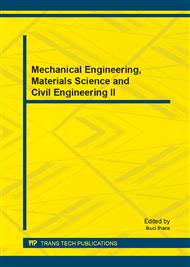p.677
p.683
p.689
p.693
p.699
p.703
p.707
p.712
p.717
Study on CCT Curve and Microstructure Evolution of HRB500E
Abstract:
The microstructure evolution and hardness change were studied for vanadium containing high strength seismic rebar HRB500E at different cooling rates. The experimental results showed that bainite and martensite gradual emerged with the increasing cooling rate and resulted in an increasing micro-hardness. The cooling rate should be controlled at 0.5°C/s to 7°C/s to ensure good performances of steel rebar. The CCT curve of HRB500E measured with the inflation method and metallographic-Hardness method could provide the theoretical basis for controlled cooling process.
Info:
Periodical:
Pages:
699-702
Citation:
Online since:
December 2013
Authors:
Keywords:
Price:
Сopyright:
© 2014 Trans Tech Publications Ltd. All Rights Reserved
Share:
Citation:


